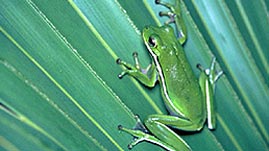The world can be an unforgiving place. Animals must be able to withstand the wear and tear of daily life as well as a wide range of environmental conditions, including wind, rain, snow, sun, cold, and heat. An animal's first line of defense against all the hardships that life has to offer is a good protective covering.
There are many different types of animal coverings, and some of these coverings serve multiple purposes. For example, vertebrates, including mammals, birds, reptiles, amphibians, and fish, are covered with skin, often in combination with some other type of covering. Because skin is a living tissue, it is always growing and repairing itself. In addition to being very tough, capable of protecting lower tissue layers from damage, skin is also very elastic, stretching to allow an animal a wide range of movement.
In contrast, arthropods, including insects, crabs, and spiders, are covered with a hard, inflexible outer shell called an exoskeleton. While this type of covering may offer greater protection than skin, especially against being eaten by another animal, it does limit an animal's movement and ability to grow. In fact, arthropods must periodically shed and replace their exoskeletons so that they can grow. This is a vulnerable phase in an arthropod's life.
One of the most important functions of both the vertebrate's skin and the arthropod's exoskeleton is to provide delicate internal body tissues with a water-resistant seal. For land animals, whose cells would quickly shrivel and die if exposed to air, the seal locks in moisture. For aquatic animals, the covering does the opposite, keeping out excess water, which can be as lethal to cells as too little water.
Many vertebrates have a covering on top of their skin that provides added protection. Hair, fur, and feathers help to insulate animals from the cold, just as a winter coat keeps you warm on a cold day. These coverings, as well as scales, also protect the skin from wear.

 Loading Standards
Loading Standards Teachers' Domain is proud to be a Pathways portal to the National Science Digital Library.
Teachers' Domain is proud to be a Pathways portal to the National Science Digital Library.
